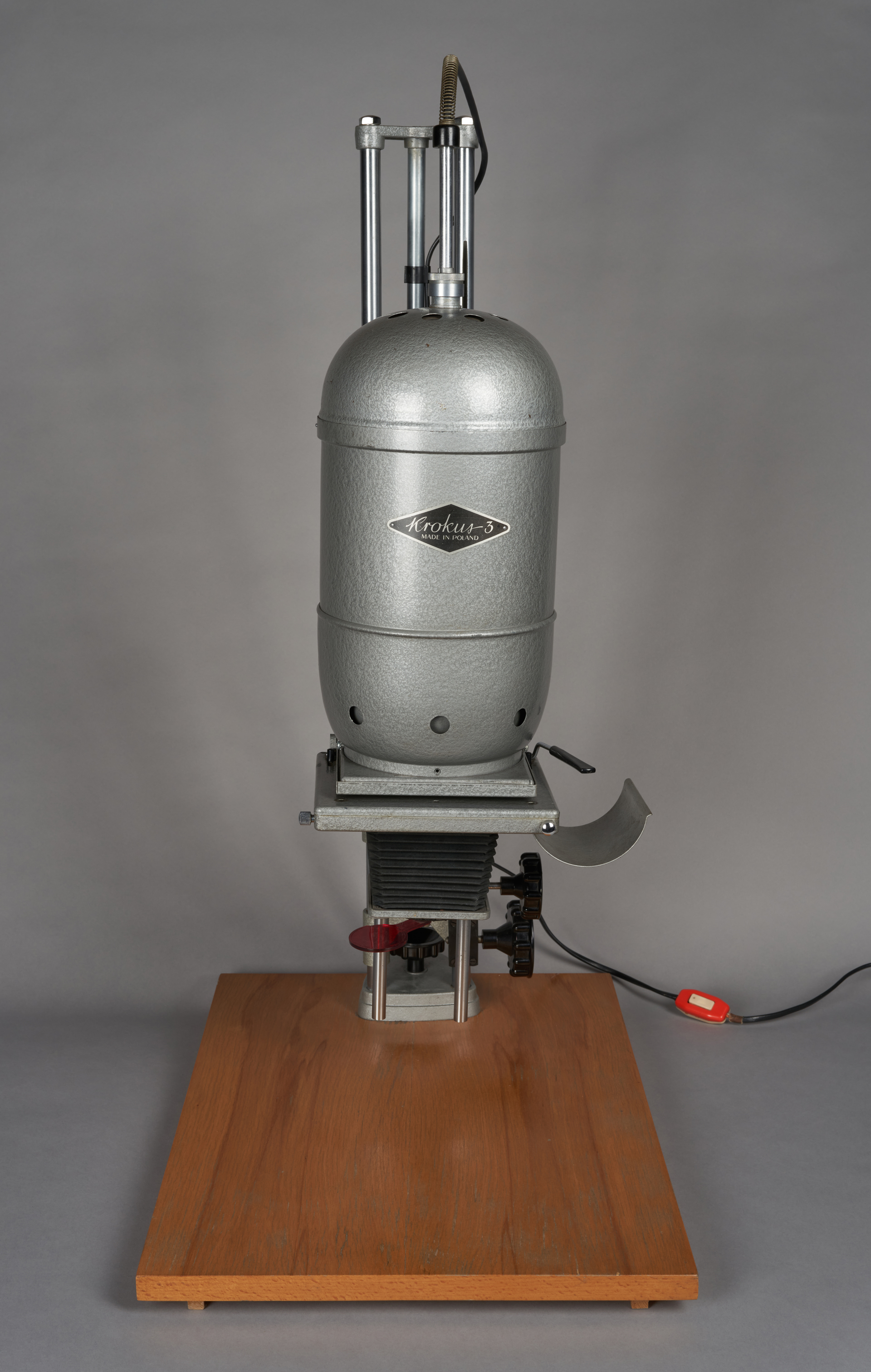
Krokus 3 enlarger
Warszawskie Zakłady Foto-Optyczne,Creator
Warszawskie Zakłady Foto-Optyczne
Time and place of creation
Place:
Poland
The Krokus 3 enlarger is an optical device for making prints by projecting and enlarging images on photographic paper in a photographic darkroom. For that purpose, the negative image film (with a size of up to 6 x 6 cm) is enclosed in a flat film carrier equipped with two pairs of built-in vertical and horizontal diaphragms. The diaphragms adjust the area of the image being copied onto the light-sensitive material, which is placed on the platform beneath the lens. Just below the carrier is a glass condenser for the even lighting of the negative film. It is embedded in the bottom part of the lamp housing container. Light is provided by a lightbulb. Below the negative carrier are extensible bellows with an optical arrangement equipped with a ring with red safelight filter (“lollipop”) – light-sensitive material does not react to this colour, which enables scaling and preliminary image processing to be adjusted before actual exposure. The desired enlargement is obtained through the spreading of the light beam and placing of the object in relation to the light source, while simultaneously moving it further or closer to the platform. To achieve this, the enlarger body needs to be raised relative to the column on which it is mounted. This is enabled by a sliding mechanism with three steel rods making up the supporting column. The rounded shape of the Krokus 3 housing is related to sheet metal extrusion technology. Due to the factory production, the body and other components are covered in a hammered texture coating, concealing the surface imperfections that would otherwise require corrections and polishing. This was a typical practice applied to mass-produced products in the 1950s and 1960s.
The Krokus 3 enlarger is one in a series of enlargers of the same name, manufactured from 1953 until the 1990s. This particular model (a version for processing black-and-white, and later colour photography), was one of the export products sold mostly in the West in order to earn hard currency. It was manufactured in the nationalised Warszawskie Zakłady Foto-Optyczne (renamed to Polskie Zakłady Optyczne in the late 1960s). The enterprise, established in 1899 as an optical instruments factory, was transformed into Fabryka Aparatów Optycznych i Precyzyjnych H. Kolberg i s-ka in 1921 by a group of industrialists that included Kazimierz Mieszczański, Georg Cora, Karol Hercyk and Henryk Kolberg – nephew of Oskar Kolberg, the researcher of Polish folk culture.
Author: Filip Wróblewski
Krokus 3 enlarger
Warszawskie Zakłady Foto-Optyczne,Creator
Warszawskie Zakłady Foto-Optyczne
Time and place of creation
Place:
Poland











